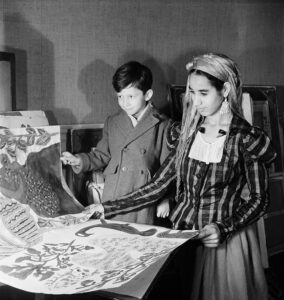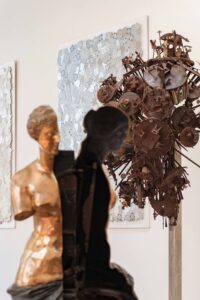
5 lithographs of 1975 published by Maeght
Joan Miró produced nearly 1,800 original lithographs and prints at the Maeght studio. He composed his score, invented his alphabet, scattered his symbols across the white page of his writing, close to graffiti. Everything was free, released, aerial, penetrated with interior light. He celebrated marriages between all techniques. Nothing was ever excessive or gratuitous. His creation cut to the essential. Miró created his own language. Dots, lines, scratches, graffiti, writing, mysterious anthropomorphic figures swimming or flying through infinite territory, fed by sparks. The power of black, awestruck colors… And the paper always defended its whiteness. Miró was about drawing above all else. His energy burst on to the sheet. We feel the rigor in his creation. He played with discordant tools, contrasting graphics.
Joan Miró (1893-1983)
Lithography (from the Greek lithos: stone): For this process, the artist must work backwards. Invented in the late 18th century by Senefelder, lithography is a planographic process based on the principle that oil and water repel each other. The artist draws on a stone with a wax crayon or greasy ink. The ink penetrates the pores of the stone. After a chemical treatment to stabilize the oil, the stone is dampened, the water penetrating the blank areas and being repelled from the areas covered with oil. The stone is inked with an inking roller loaded with greasy ink, and only the greasy areas accept the ink from the roller, while the pores in the blank areas, soaked with water, repel the greasy ink. One stone is needed for each color. Some artists, such as Marc Chagall, produced lithographs with 18 colors, while Pierre Bonnard, who loved using the process, declared that a successful lithograph should have no more than four colors. Printing from the stone is limited by the wear of the finest, most delicate areas, which is why some lithographs are printed in 25, 50 or 75 copies. The print run is stopped as soon as the finest details disappear. After printing, the stone is sanded to remove the ink that has entered the pores. Once sanded, the stone can be reused. The stone is heavy to handle. Lithographs measuring 120 x 160 cm require a stone weighing about 600 kg.



